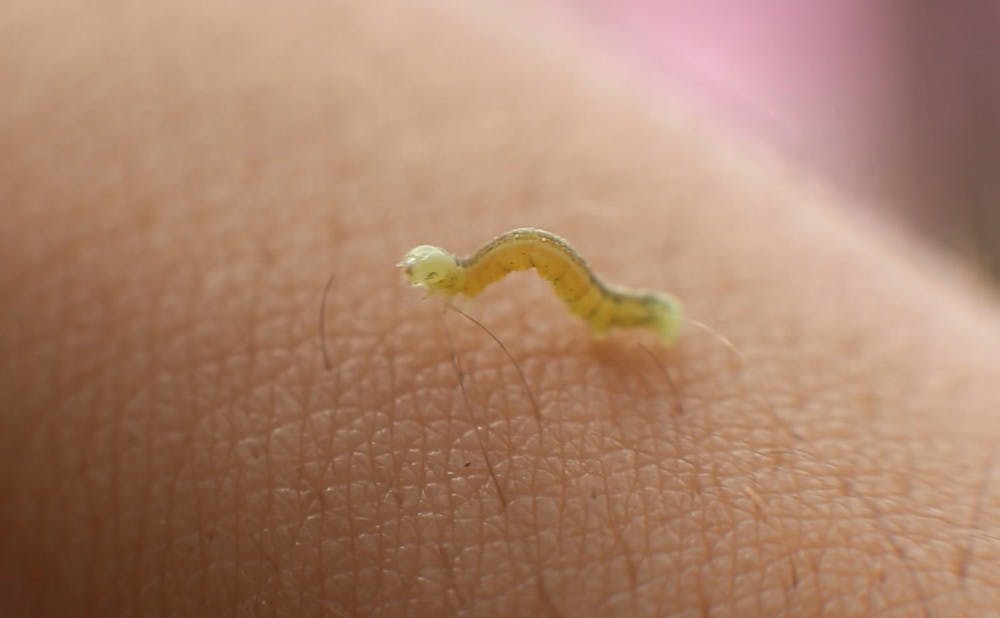When students come to Duke, they expect to have all sorts of new experiences—entanglement in the strands of small, green worms is usually not one of them.
“I've never experienced inchworms in my life before coming to Duke,” said freshman Adriana Okoye. "They're really annoying and gross. I hate them."
The inchworms—whose presence peaked last week—can be spotted dangling from trees all over campus. The recent abundance of worms has altered many students’ lives, including freshman Kevin Bu who said he is now too scared “to walk within 20 feet of a tree.”
“I’ve stopped doing my regular exercise routine of running around East Campus loop because when I do, I get a bajillion in my hair and on my clothes,” said Bu.
Though many students have been surprised to see the worms, their emergence each year is a fact of life for many in the Duke community—in particular employees of the Sarah P. Duke Gardens.
“It’s just one of those things that happens twice a year, and we live with it,” said Robert Mottern, director of horticulture at Duke Gardens.
The creatures are not actually “worms” at all, he noted, but rather a mix of several similar species of moth caterpillars. The most common are the cabbage looper and the spring cankerworm (Trichoplusia ni and Paleacrita vernata, respectively).
The caterpillars emerge from their eggs over a span of two to three weeks each spring and fall and consume leaves before descending to the ground, where they become pupae. They later emerge as moths—many of which are wingless—that climb trees and lay their eggs before dying. Many end up as food for baby birds, Mottern explained.
The large quantity of the insects can cause defoliation, a concern for the willow oaks surrounding campus, Mottern said. Trees that need protection will often be wrapped in a sticky band that traps the female moth before she can lay her eggs. In terms of the quantity of worms, Mottern said some years are worse than others, though this year was relatively average.
Bu, however, remains terrified of the creatures.
“Inchworms are pretty much the bane of my existence. Please send help,” he said.
Get The Chronicle straight to your inbox
Signup for our weekly newsletter. Cancel at any time.
Adam Beyer is a senior public policy major and is The Chronicle's Digital Strategy Team director.

